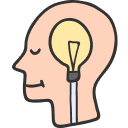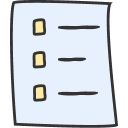
Whole Week Overview
Overview:
This week, students will learn about how to define vocabulary words as they are used in context and from antonyms. Students will also practice using novel words in their own writing.
Standards:
CCSS.ELA-LITERACY.RL.3.4/4.4/5.4
Determine the meaning of words and phrases as they are used in a text, including those that allude to significant characters found in mythology (e.g., Herculean).
Resources:
- Teacher Guide
- Daily PowerPoints with Teacher Notes
- Printable Passages, Notes, Activities, Warm-Ups, and Exit Tickets
- Short Standards-Focused Assessment

Day 1 - Introduction
Launch
Introduce the learning targets. Students will read a passage and try to define the words based on how it is used in the sentence.
Core Instruction
Using the guided notes and handouts, you’ll define “Vocabulary in Context” while having students identify key words. You will also introduce key steps and strategies for determining the meaning of unknown words.
Guided Practice
Using the guided notes and handouts, students will circle or highlight words that help them understand or define the unknown vocabulary words in a passage.
Independent Practice
Using the handouts, students will determine the meaning of unknown “silly” or nonsense words within passages. Exit tickets and checks for understanding are built into the handouts and PowerPoint.

Day 2 - Whole Class Practice
Launch
Students will define three unknown words using yesterday’s general strategies.
Core Instruction
Remind students of key strategies for defining unknown words. Using the PowerPoints and handouts introduce the day’s “Mystery Words” and assign students case files to help decode the meaning.
Group Practice
Students will use the scaffolded handout to determine the definitions of unknown words by looking for synonym clues within short passages. Exit tickets and checks for understanding are built into the handouts and PowerPoint.

Day 3 - Independent Practice
Launch
Students will define five unknown words using yesterday’s general strategies.
Independent Practice
Students will read an extended passage with many challenging words. Students will self-identify unknown words, keywords to help define them, and attempt to define the unknown words.
Group Practice
Students will use the scaffolded handout to craft silly sentences for three of the five unknown words from their independent practice. Their partner will then determine which of the unknown words fits best within the silly sentence. Exit tickets and checks for understanding are built into the handouts and PowerPoint.

Day 4 - Alternate Strategies
Launch
Students will define an unknown word using antonym clues.
Core Instruction
Using the guided notes and handouts, define “antonym” and practice providing them.
Independent Practice
Students will read multiple short passages with antonym clues. Students will define the unknown words using the antonym clues.
Extended Practice
Students will provide illustrations to demonstrate the meaning of previously unknown words. Exit tickets and checks for understanding are built into the handouts and PowerPoint.

Day 5 - Assessment
The Assessment
Hand out the assessment for students and then go over the directions:
- Read the passage carefully.
- Circle context clues that help you define the bolded words
- Write a definition for each bolded word and which strategy you used to determine the definition.
Students will also be asked to apply what they’ve learned to one passage and five stand-alone sentences.